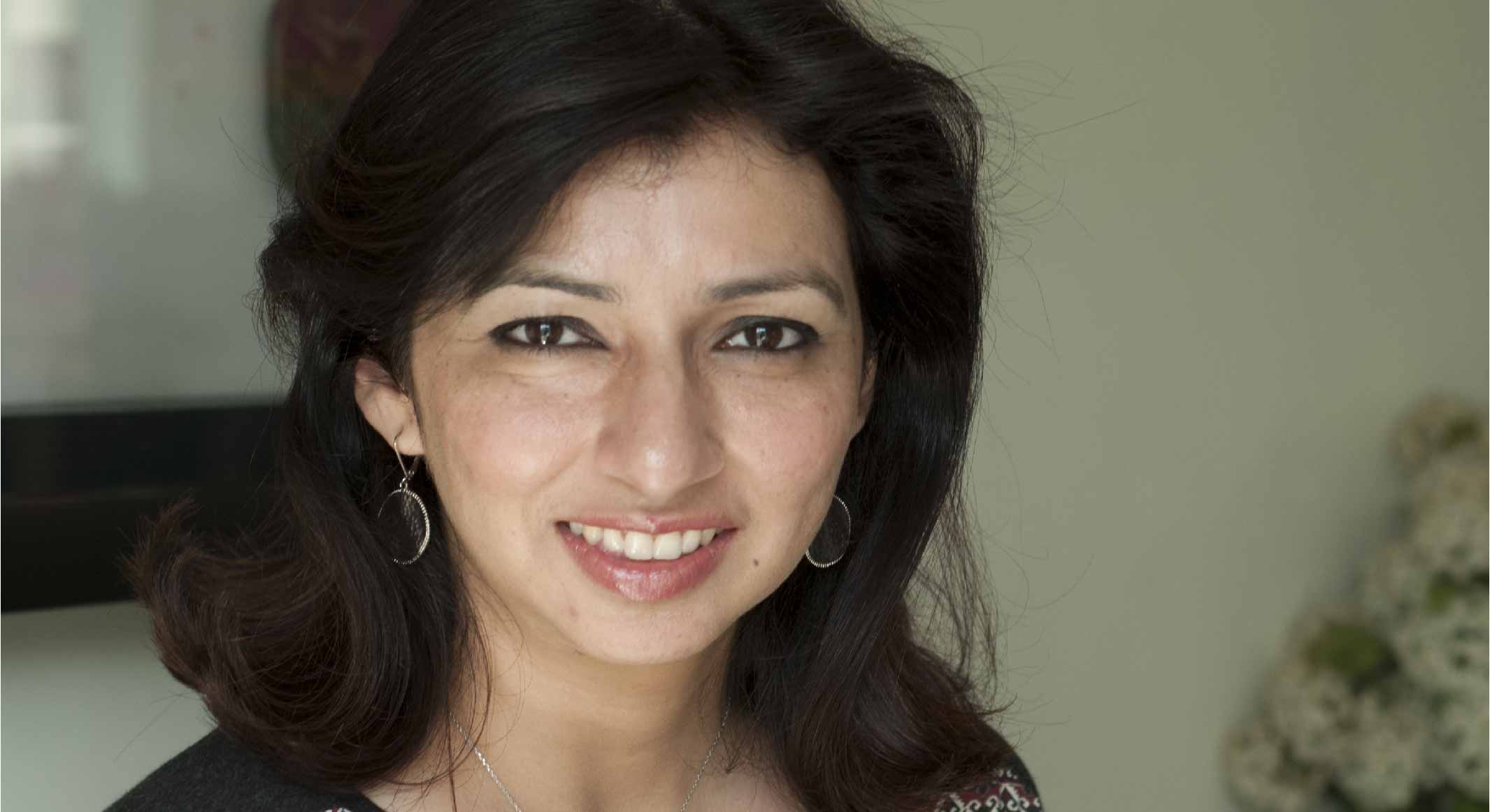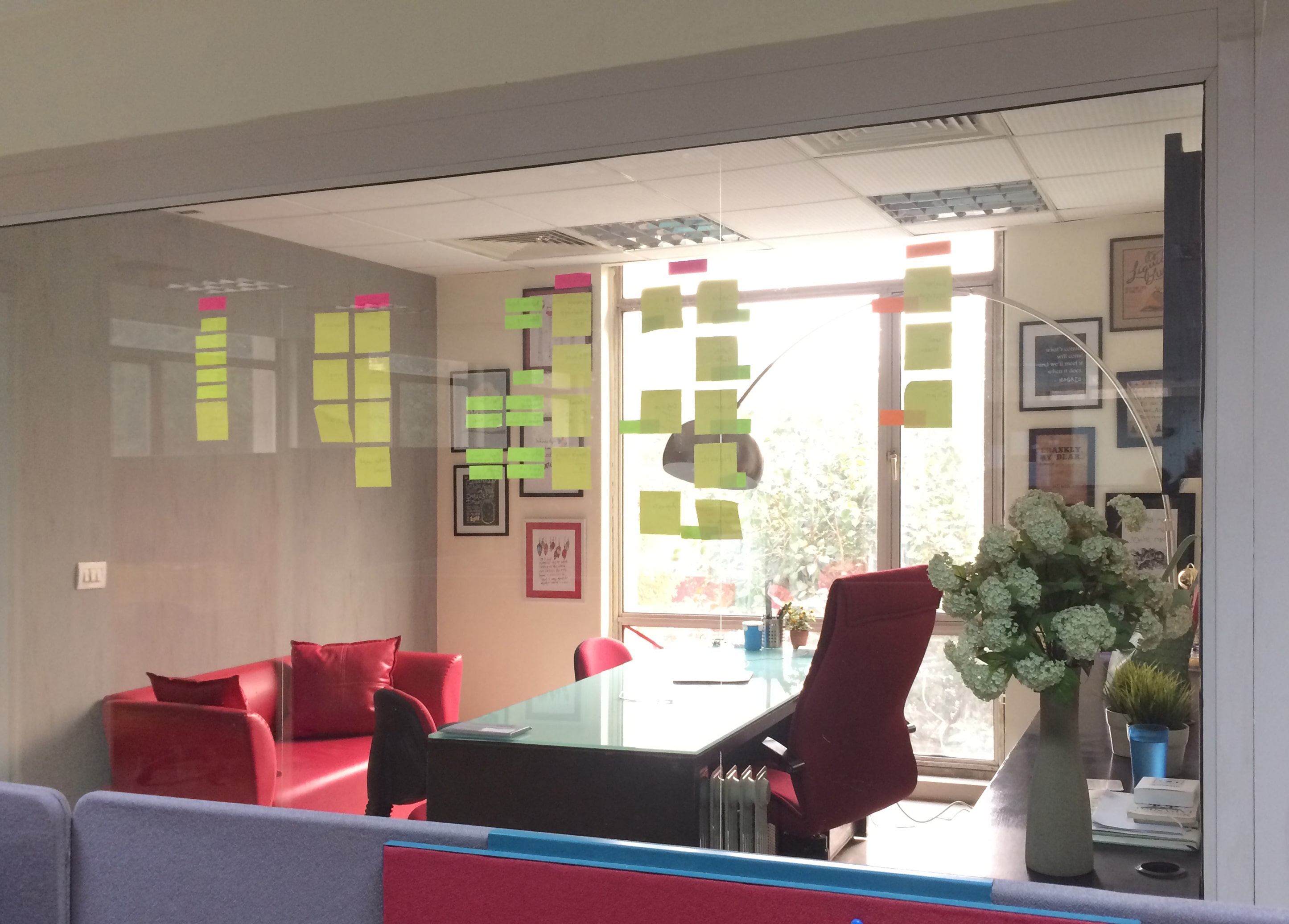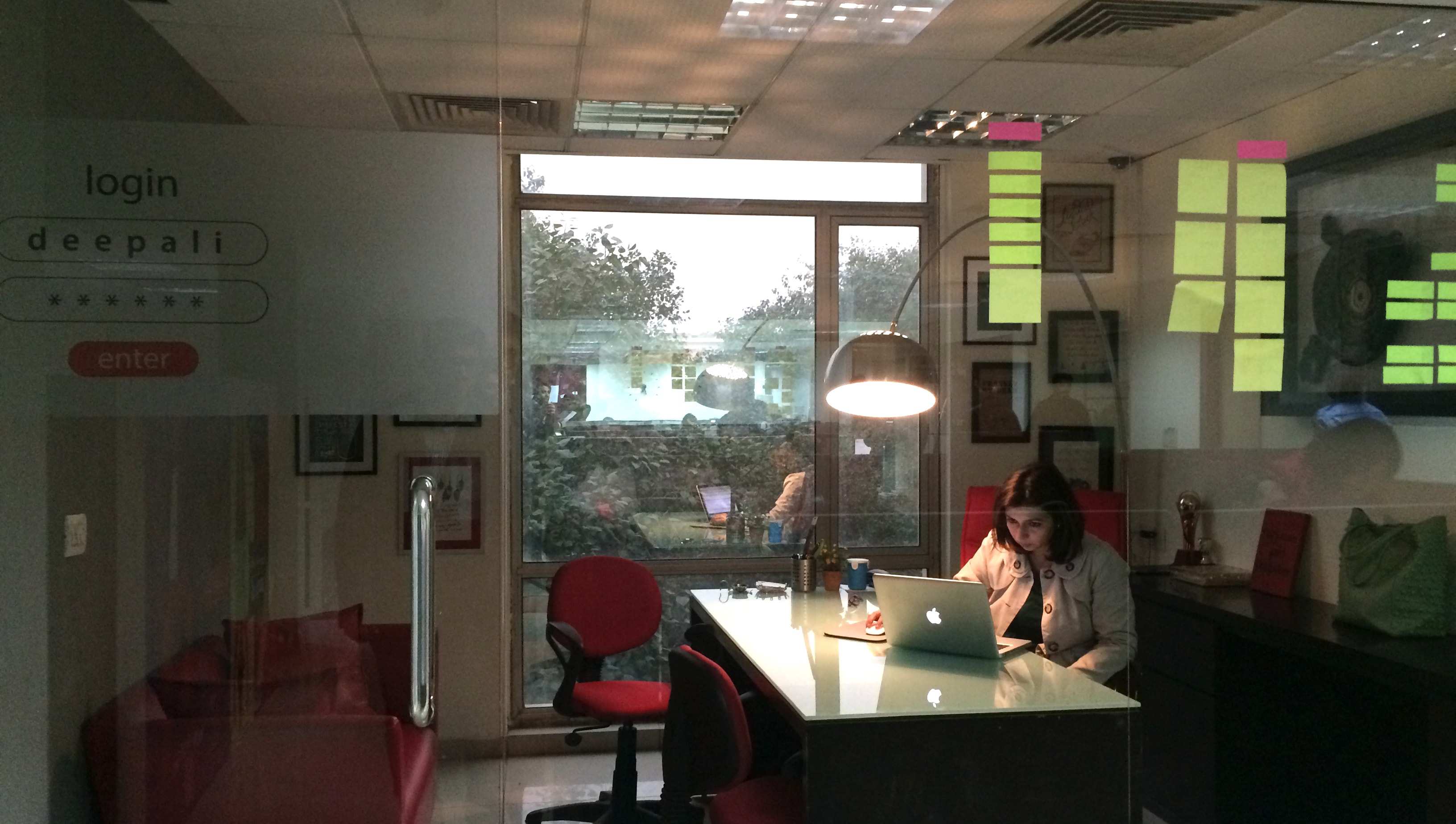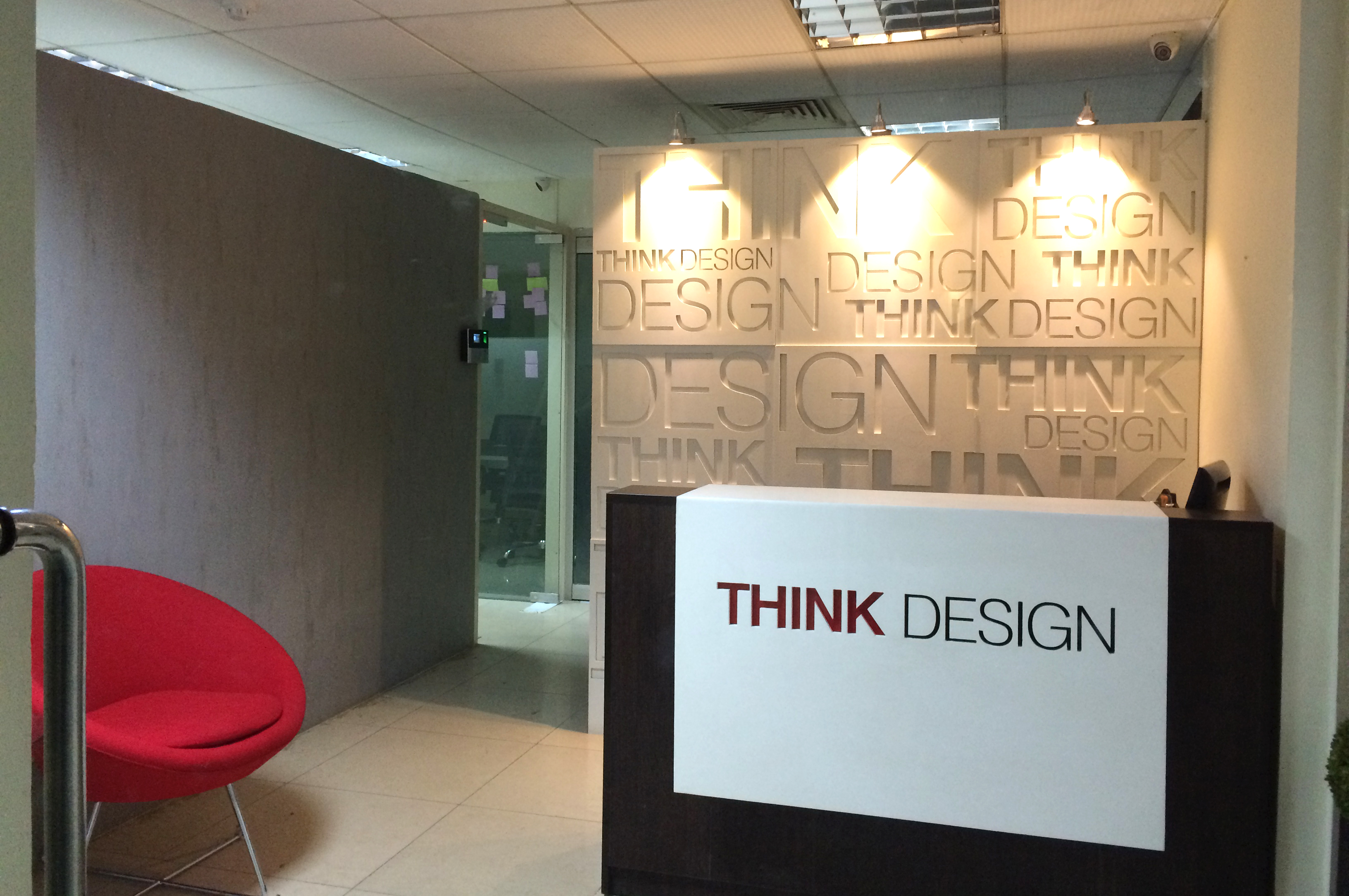Deepali Sahni
Design Director & Co-Founder - Think Design
Deepali Sahni is the Head of Design Practice and Co-Founder at Think Design. A graduate from National Institute of Design, her firm helps organizations become more user-centric. In her interview she talks about design thinking and her journey as a design entrepreneur. Keep reading to get an insight into her life as a designer.

How did you get into design and how long has it been?
I was creatively inclined since I was a kid. I just did not know what my avenues were to learn design formally, as it was in 1990’s. I chose to do my bachelors in architecture. I discovered, then, that there was more to design. I started reading design related material. This was before the Internet was accessible. That discovery process took time. We were not in a connected world so it wasn’t easy to figure out. As I met more and more people, I discovered places like the National Institute of Design and Industrial Design Center. I applied for masters in NID. NID was the inflection point. My thinking changed completely. Architecture was the foundation for design, but NID was the biggest influencer. While in NID, I got a scholarship and went for a semester to France. As a student that really helped me to understand how cultures influence design so much. While studying at NID, we were exposed to Research Methodologies, Product Design & Systems Thinking and I understood that the problems are part of an ecosystem. When I went to France, I realized the problems there are so different. This exposure to two vastly different eco-systems & cultures as a design student was a great learning experience.
What led you to start Think Design?
About Entrepreneurship—Learning as an Entrepreneur—Early work and growth—Getting mature and streamlining processes


Think Design Interior Office Space
Tell us about the ups and downs while running Think Design?
If you’re starting something from scratch then you can’t call it a struggle period or define it as ‘downs’, you signed up for it! It was a lot of hard work, a lot of learning & a lot of fun. Ours has been a profitable company from day one. For the first few years, there was intense learning on multiple aspects such as Design for Industry, Engineering Practices, Customer Service, Maintaining Compliances, Attracting & Retaining talent, Time Management, Teamwork and so on. What was very encouraging was, having some great designers join our team, or for us, seeing our own internal team members rising to leadership roles. Our team is our biggest asset. Today we are in five locations, we wouldn’t have had that without so many brilliant people working for us.
What is Think Design? What do you do?
Think Design is primarily a strategic design company. Our core expertise lies in consultative design. We team up with client organizations to help define their business or product visions; research & understand their users or customers; help create Design Strategies & Tangibilize the strategy into UX Design of products & services across touchpoints & devices while working closely with technology teams.
What is the work culture of Think Design
Firstly, we are process driven and use frameworks of Design Thinking as part of our daily work. Secondly, our work is very collaborative in nature. We’re usually extended design teams to a lot of our clients and work closely with their leadership teams to identify problems and create relevant solutions. Our success is very closely tied to our clients’ success.
Also, teamwork is intrinsic to Think Design, and we take joy in working closely with each other, building on each others strengths. Although we are in five locations, we have teams working seamlessly together across locations. We are fluid in that sense, and quite disciplined too!
What is your typical day like?
My work involves a lot of meetings, including a fair bit of travel. In a week I’ll be meeting at least 2-3 new people, usually across Industry domains. These are usually key stakeholders in companies who are either seeking solutions to problems identified by them, or needing help identify new opportunities. Meeting & talking to people such as these on a regular basis helps me see patterns to what business are seeking and how design thinking & designers can help make business decisions, not just design solutions.
For Designers working at Think Design, their work depends on the day of the week. Each one has their work cut out. We have Monday Standups, Wednesday Tech Talks, Friday Learning Sessions etc. Those are slotted. Apart from the daily design work, there will be some amount of brainstorming sessions and some amount of reviews.
What is your favourite piece of work or project that you're proud of ?
Inclination towards Social Innovation—Project in Bihar : Child Mortality—Working directly with users—Project Outcome


Deepali's Workspace
What is your work setup like?
My work table is usually uncluttered! I have my macbook. My phone. A notebook, as I write a lot. I devote considerable time to research as I do workshops regularly. And yes, a lot of visiting cards piled up.
How has the perspective of industry changed over the years towards design?
It’s definitely much better now. The understanding and value of design has changed phenomenally. People understand & respect design & its impact a lot more. 25 years ago, design meant arts or architecture. That has changed. We have been around for long enough to see it. We have seen the evolution of user experience over the years. About 12 years back when we started our company, UX terminology didn’t exist as such. We started with interfaces for handheld terminals a decade ago, moved onto desktop applications, Web & mobile and now many more form factors. There is a huge difference in the way companies used to talk about design a decade ago and now. Industry now has roles such as Chief Innovation Officer, which is currently being occupied by MBA graduates and Six Sigma experts, but in the future it shall be occupied by designers. The value of design will rise considerably in future.
What is design for you?
Design is a way of life, an integral part of whatever we do. We even designed our organization’s structure, processes, how we work, our office signage! It’s not just physical or digital design. It’s a way of thinking. It’s almost like it is a part of our lives now.
Describe the relevance of Design Thinking in the present era?
What is Design Thinking?—Explained by two examples—The why and not just the how—Processes—Customer Service personnel—Being open to learning


Photos from a project undertaken by Think Design in rural Bihar

Where do you look to get inspiration? Favorite Designer or Studio?
We discuss, read, brainstorm a lot. We have so many people around in our teams, so in case we are stuck, we talk to each other. We work together a lot. A lot of information is shared internally.
A piece of work that you find interesting. Something that is really done well?
I absolutely love Airbnb. Their business model, design of app & website and the overall customer experience are all exceptionally good. The way they’re built & they operate, it reflects a sound foundation in Design Thinking. How they identified the user problem as an opportunity and also made it into a business is quite commendable. They are also constantly evolving with the ecosystem, the latest being the introduction of AirBnb experiences. I am a user of AirBnb, so have experienced it firsthand multiple times. You know you see these companies doing so well and you realize that for them design is not an afterthought. It is central to the business as well as to the product itself.
We live in a volatile sort of a digital environment today. You could have a brilliant idea and an equally brilliant offering but the times are changing so fast that in about two years you will get outdated. Everyone realizes that, but a lot of them don’t bring any meaningful change. You add tons of features and eventually you have no idea of who you were in the first place. Feature bloat is a common disease.
In India, Housing was nice when it came initially, now we all know what happened. It was revolutionary in many ways. The way they used data analytics to improve the experience was quite appreciable. I thought it was quite exciting.
“ Go to design school. Do internships. Travel a lot. Find meaningful teams who think before doing and are generous with sharing knowledge. ”
How important is formal education in design? Would it have been any different if you didn’t have it?
I have had a lot of people who’re non designers ask me this question. I always say “sab kuch chhodo, college jao” (leave everything and go to college). If you are working and can afford to leave the job, then leave it and go to college for 2 years. The learning environment & hands-on structured education in formal design institutes is invaluable. It changes the way you think.
There are other alternatives too.
You can also learn through experience. Do internships of the kind which would help you gain that experience. You should know why things are being done and not just how things are being done. It would take a longer time but no harm in taking this route either.

Think Design Office
What does Think Design look in applicants?
We take few interns. It’s a practical problem as most of our work is covered with Non Disclosure Agreements (NDA). So we do everything in house. In terms of jobs, we mainly look at a person’s thought process. We have certain tests and personal interviews. So if you have done something, we will ask you why you have done it, how did you think of this etc. We are huge fans of product designers because we believe that design thinking is deeply inculcated in them. That’s important. Learning tools is easy. You need to get your thinking right. Getting into details, being curious, being a deep listener, being research oriented - these are what we look in designers.
How does one apply to Think Design?
We have our HR email id on our website. We get applications from there. You need to send your portfolio along with your resume. When looking at a portfolio, we see what has been done and how it has been explained. What was the thinking behind designing the product, basically the process! It’s a bonus if you know some popular techniques and methods used in designing the product. If you also have an understanding of frontend development, it’s a plus too.
What are you reading currently?
I’m reading a fantasy novel called “Last of the Wilds” by Tudi Canavan. It’s a slightly dark & humorous series about magicians.
Book recommendations for designers?
Oh yes. “The Fifth Discipline” by Peter M Senge. It’s about Design Thinking and System Design. It could be your Bible. “Business Model Generation” by Alexander Osterwalder and Yves Pigneur. It's simple, clear and easy to read.


